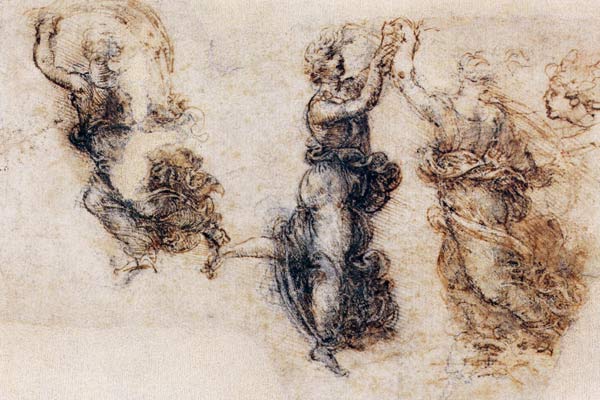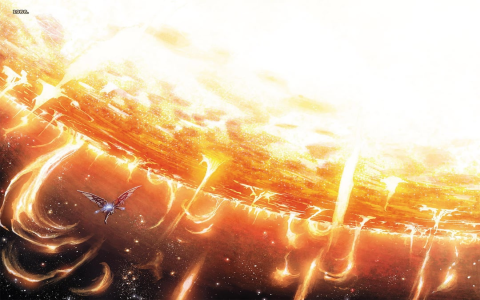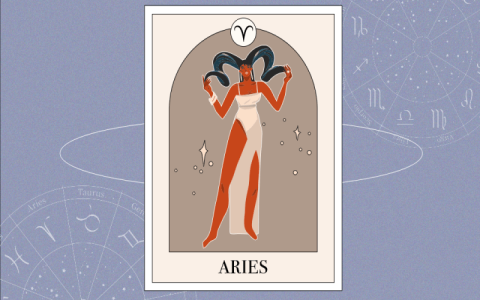Well now, y’all askin’ about them celestial dancers, huh? You mean them angels that dance up there in the heavens like they got wings and all? I reckon y’all might be wonderin’ what they’s called, and let me tell ya, it ain’t no regular folk we’re talkin’ about here. These folks, they got a special name. Now, folks might say they are like the nymphs or maybe the dancers of the gods, but in proper talk, they’s called “apsaras.”
So let me start from the beginnin’. A long time ago, in them high heavens above, there were these beautiful, graceful women that danced and sang for the gods. They didn’t just dance for anyone, mind ya—only for the most powerful beings like the big man himself, Indra, the king of them heavens. These apsaras weren’t your everyday dancers, no sir. They were celestial beings, born from the very waters, and they were made to entertain the gods. What a life, huh? Dancin’ and singin’ to please the mighty ones up there. It’s a far cry from the hard work we do down here on Earth!
Now, these apsaras weren’t just pretty faces and fine dancers. No, no. They had special roles, and it’s said that they could bring a lot of trouble too. They had the power to charm and seduce gods and even kings. Some say they were like heavenly temptresses, able to distract powerful men from their duties or stop ‘em from gettin’ too powerful themselves. Kinda like their job was to keep the gods and kings from gettin’ too full of themselves, I reckon.

One of the most famous stories is about an apsara named Urvashi. Oh, she was somethin’ else, let me tell ya. Now, Urvashi wasn’t just a dancer, she was also known for her beauty and charm. She had a knack for makin’ folks lose their heads—literally. But she wasn’t the only one. You also got Menaka, Rambha, and Tilottama, each with their own special stories and talents. Some of these women were known to cause great strife in the heavens, and even in the mortal world, just by dancin’ and singin’! They could make the mighty gods themselves lose their focus.
Y’see, the apsaras were a big deal in Indian mythology, especially in the Mahabharata, a famous old story. In this tale, the names of 45 apsaras were mentioned, each one known for their unique beauty and talent. Rambha, Menaka, and Urvashi, they were some of the big ones. They weren’t just there to entertain, no sir, they had a deeper role in the grand scheme of things. The gods and goddesses, they relied on these celestial dancers to keep things in balance. If the gods got too distracted or too comfortable, well, that was a problem, and these apsaras kept ‘em in check.
It’s said that these dancers didn’t just dance for fun or to pass time. Oh no, they were connected to the spiritual world. The apsaras, along with the gandharvas, who were like celestial musicians, formed an important part of the divine entertainment. The two worked together, playin’ music and dancin’ in a way that kept the heavens filled with joy and harmony. They weren’t just performing; they were keepin’ the peace up there, and who knows, maybe even settlin’ a few disputes now and then. I wouldn’t want to be the one to mess with an angry god, but I guess these dancers knew how to keep ‘em happy!
But what’s more amazin’ is how these apsaras weren’t stuck up there only to perform. Over time, their stories spread to different parts of the world, and people came to see ‘em not just as dancers, but as divine beings that represented the beauty and complexity of life itself. They was more than just eye candy or distractions—they were part of the grand cosmic order, and folks who believed in ‘em saw them as messengers, too. Some folks even say the apsaras could be protectors of sorts, wardin’ off evil spirits and lookin’ after the world below. Mighty powerful ladies, if you ask me.
In art, we see ‘em painted and sculpted all around—especially in places like Cambodia and Thailand. Them temples from the old days, they got ‘em carved into the walls, dancin’ and singin’ to the gods. If you ever get to see these works, you’ll know what I mean. There’s somethin’ magical about the way they’re depicted, like they’re frozen in time, forever part of that heavenly music and dance.
Now, I reckon you might wonder, why is it so important to know about these celestial dancers? Well, it’s ‘cause they tell us a lot about how ancient folks saw the world. They wasn’t just lookin’ at gods and goddesses from afar—they saw the divine in everyday life, in music, in dance, and in the beauty of nature itself. They saw the apsaras as part of the cosmic dance that keeps everything in balance. Ain’t that somethin’ to think about? That even the gods needed a little entertainment to keep their minds off the weight of the world!
So next time someone talks about these celestial dancers, remember: they’re more than just pretty faces. They were part of a grand plan, dancin’ and singin’ to keep the world in order. Maybe we could learn a thing or two from these heavenly performers—about balance, beauty, and how to keep things in harmony.
Tags:[Leonardo da Vinci, Celestial Dancers, Apsaras, Indian Mythology, Gandharvas, Heavenly Music, Art History, Ancient Legends, Cosmic Balance, Temples of Cambodia]


